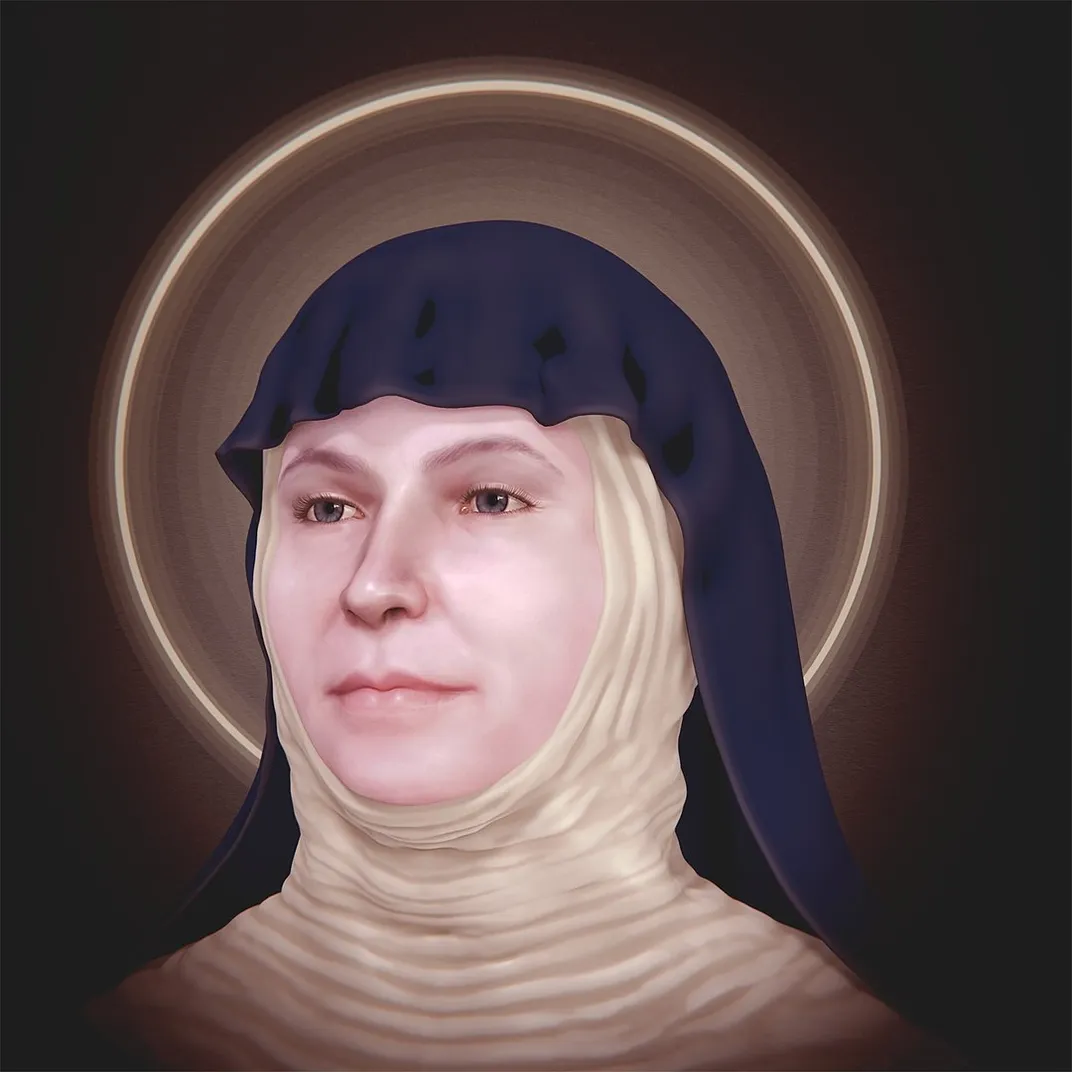3-D Reconstructions Reveal the Faces of Two Medieval Dukes
Researchers used a variety of techniques to visualize what Czech rulers Spytihněv I and Vratislav I might have looked like
:focal(396x278:397x279)/https://tf-cmsv2-smithsonianmag-media.s3.amazonaws.com/filer/f2/54/f25437a4-5fd4-4cdd-80e3-b2eb44013835/medieval_dukes.jpg)
Back in the 1980s, anthropologist Emanuel Vlček visited Prague Castle to examine two skeletons linked to the Přemyslid dynasty, a royal house active between the late 800s and 1306 A.D. Now, reports Czech news outlet iROZHLAS, researchers have used modern technology to analyze these remains and envision what their owners might have looked like.
A joint Czech-Brazilian research group drew on facial reconstruction techniques to approximate the appearances of two medieval brothers: Dukes Spytihněv I (circa 875–915) and Vratislav or Vratislaus I (circa 888–921), father of Czech patron saint Wenceslas I.
The team, which included archaeologists Jiří Šindelář and Jan Frolík, photographer Martin Frouz, and 3-D technician Cicero André da Costa Moraes, has previously reconstructed the faces of Zdislava of Lemberk (circa 1220–1252), patron saint of families, and Czech monarch Judita of Thuringia (circa 1135–1174), among others.
According to Radio Prague International’s Brian Kenety and Lucie Hochmanová, the scholars used radiocarbon dating and DNA analysis to identify the remains and gain insights into the deceased’s diet and mobility. (Frolík co-authored a 2020 study outlining the findings in great detail.) They then scanned the dukes’ skulls with photogrammetry, a technique that captures objects’ measurements in minute detail.
“So, we got a … quite accurate image of each individual’s skull in this way, … and then it [was] no longer any problem to perform a digital scientific reconstruction of the face,” Šindelář tells Radio Prague.
After the team created digital models of the skulls based on the scans, Moraes stepped in to add muscle, tissue and other facial features. As Jan Kužník reports for Aktuálně.cz, he relied on multiple three-dimensional reconstruction techniques, including anatomical and soft tissue depth methods, to ensure the highest possible level of accuracy.
Because skeletal analysis alone doesn’t reveal such “textural information” as skin tone, eye color, hairstyle and facial markings, reconstruction experts often have to make educated guesses based on knowledge of contemporary customs and historical sources. In this instance, however, Moraes had access to the dukes’ DNA, which suggested that they had blue eyes and reddish-brown hair.
Spytihněv was the son of St. Ludmila and Bořivoj I, the first ruler of the Přemyslid dynasty. He laid the foundations for Prague Castle, constructing a “fortification system consisting of wood-and-clay ramparts with a stone-reinforced front wall and a moat,” as historian Jan Klapste writes in The Czech Lands in Medieval Transformation.
Vratislav, meanwhile, was Spytihněv’s younger brother. Per iROZHLAS, he is known as a competent ruler who extended his kingdom beyond the Czech Basin. Vratislav’s son Wenceslas, a Christian ruler whose assassination in 929 secured his status as a martyr and saint, provided the inspiration for the Christmas carol “Good King Wenceslas,” according to Classic FM’s Elizabeth Davis. The researchers plan to reconstruct Ludmila and Wenceslas’ faces later this year.
In 2018, Moraes told Radio Prague’s Kenety that he performs reconstructions without knowing the individuals’ identities, as this information could hinder his ability to render faces objectively.
“[I]f you like a historical figure, maybe—maybe—in the deepest part of your mind, you might try to create an interesting face,” he explained. “So, it’s important not to know who you are reconstructing.”
In recent years, scholars have challenged the accuracy of a number of prominent facial reconstructions, including Egyptian Queen Nefertiti and Cheddar Man, a prehistoric Briton depicted by researchers as a man with dark brown skin and blue eyes.
As Stephanie Pappas wrote for Live Science in 2013, “[F]acial reconstructions, even well-done ones, can be misleading. For example, bones tell scientists nothing about the size of someone’s ears, how many forehead wrinkles they had, or whether they often smiled or habitually wore a frown.”
Speaking with Live Science at the time, anthropologist Kristina Killgrove pointed out that reconstructions represent “a combination of science, history and art.”
The Czech-Brazilian team, for its part, tells Radio Prague that its facial reconstructions are around 90 percent accurate, as the researchers use the most modern methods available.
Referencing the Přemyslid reconstructions, Frolík says, “We could dress them in [authentic] clothes based on miniatures or manuscripts, since they are preserved. As for their hair and beards, we made educated guesses according to illustrations in the manuscripts. But we don’t really know.”
/https://tf-cmsv2-smithsonianmag-media.s3.amazonaws.com/accounts/headshot/Isis_Davis-Marks_thumbnail.png)



/https://tf-cmsv2-smithsonianmag-media.s3.amazonaws.com/filer/51/0f/510f7bbe-be81-4658-bcab-3aba97788901/978px-judith_of_thuringia_-_forensic_facial_reconstruction.jpg)
/https://tf-cmsv2-smithsonianmag-media.s3.amazonaws.com/accounts/headshot/Isis_Davis-Marks_thumbnail.png)